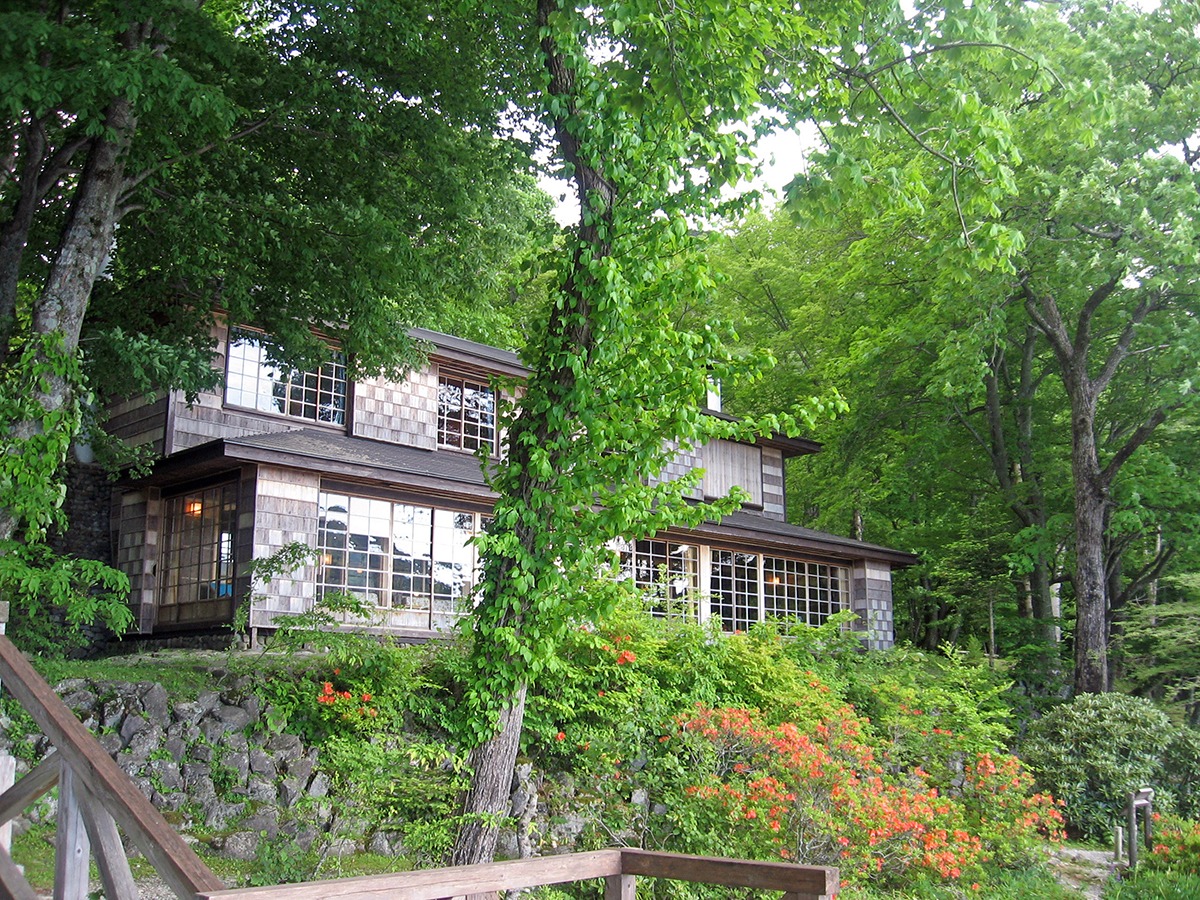Introduction
Step into the enchanting world of Kabuki theater, a mesmerizing traditional Japanese art form that has captivated audiences for centuries. Originating from the Edo period, this unique blend of drama, music, and dance is not just a performance; it’s a cultural experience that offers a glimpse into Japan’s rich heritage. As you stroll through the vibrant streets of Tokyo, the allure of Kabuki beckons, promising a night filled with colorful costumes, intricate storytelling, and the rhythmic beats of traditional music. Whether you’re a culture enthusiast or a curious traveler, experiencing a Kabuki show in Tokyo is an absolute must!
Discover the Allure of Kabuki Theater in Tokyo
Kabuki theater stands as a pillar of traditional Japanese theater, renowned for its elaborate make-up, stunning costumes, and the dramatic flair of its performances. Each show is a vibrant tapestry of emotions, where the past meets the present, and the audience is drawn into tales of love, betrayal, and honor. The significance of Kabuki in Japanese culture cannot be overstated; it’s a window into the societal norms and artistic expressions of its time.
What sets Kabuki apart from other forms of theater is its unique combination of drama, music, and dance. The actors, known for their exaggerated movements and expressive facial expressions, transport viewers to another world. The lively music, played on traditional instruments, enhances the storytelling, making every performance a feast for the senses. Whether you’re witnessing a tragic love story or a comedic tale, the emotional depth and visual splendor of Kabuki will leave you spellbound.
A Historical Journey Through Kabuki: From Edo Period to Modern Stage
To truly appreciate Kabuki, one must understand its rich history. Born in the early 17th century during the Edo period, Kabuki began as a form of entertainment for the masses, often performed by women. However, due to its risqué nature, female performers were eventually banned, leading to the rise of the onnagata—male actors who specialized in playing female roles. This transformation marked a significant turning point in Kabuki’s evolution, solidifying its place in the annals of Japanese culture.
The Birth of Kabuki: Edo Period Roots
Kabuki’s origins can be traced back to the streets of Kyoto, where it began as a lively dance performed by women. The performances quickly gained popularity, leading to the establishment of theaters. The art form evolved, incorporating elaborate staging and complex narratives that reflected the social issues of the time. As Kabuki grew, so did its influence, shaping the landscape of Japanese performing arts.
Key Historical Figures and Their Impact
Throughout its history, Kabuki has been shaped by many talented individuals. Notable figures like Ichikawa Danjūrō and Yamazaki Kōyō played pivotal roles in elevating Kabuki to an esteemed art form. Their innovations in acting techniques and storytelling have left a lasting legacy, inspiring generations of actors and enriching the Kabuki repertoire.
Kabuki’s Resurgence in Contemporary Culture
In recent years, Kabuki has experienced a renaissance, attracting new audiences both in Japan and abroad. Contemporary adaptations and collaborations with modern artists have breathed new life into this traditional art form. The fusion of traditional elements with modern themes makes Kabuki a dynamic and relevant cultural experience, appealing to a diverse audience eager to witness its timeless charm.
The Magic of Kabuki Performance: What to Expect
Attending a Kabuki performance is like stepping into a world where every detail is meticulously crafted to create an unforgettable experience. From the moment the curtain rises, you’ll be entranced by the stunning visuals and the compelling narratives that unfold on stage.
The Art of Kabuki Dance and Music
The dance in Kabuki is a mesmerizing spectacle, characterized by its stylized movements and intricate choreography. Each gesture tells a story, conveying emotions that words alone cannot express. Accompanied by live music, performed on traditional instruments such as the shamisen and taiko drums, the rhythmic beats and melodies enhance the performance, drawing you deeper into the tale. The combination of dance and music creates a captivating atmosphere that resonates with audiences of all ages.
The Role of Kabuki Actors and Onnagata
The actors are the heart and soul of Kabuki, each bringing their unique flair to the stage. The onnagata, in particular, are celebrated for their ability to embody female characters with grace and authenticity. Their elaborate costumes and striking makeup transform them into larger-than-life personas, captivating the audience with their performances. Watching these skilled actors is a reminder of the dedication and artistry that goes into every show.
Understanding Kabuki Language and Storytelling Techniques
Kabuki storytelling is a rich tapestry woven with historical references, poetic language, and cultural nuances. While the dialogue may be challenging for non-Japanese speakers, the expressive performances and visual storytelling make it accessible to all. Engaging with the performance through observation and emotion is key to fully appreciating the depth of Kabuki. The audience’s reactions—whether laughter, gasps, or applause—create a shared experience that enhances the magic of the show.
The Magic of Kabuki Performance: What to Expect
Attending a Kabuki performance is like stepping into a world where every detail is crafted to create an unforgettable experience. From the moment the curtain rises, you’ll be entranced by the stunning visuals and the compelling narratives that unfold on stage.
The Art of Kabuki Dance and Music
The dance in Kabuki is a mesmerizing spectacle, characterized by its stylized movements and intricate choreography. Each gesture tells a story, conveying emotions that words alone cannot express. Accompanied by live music, performed on traditional instruments such as the shamisen and taiko drums, the rhythmic beats and melodies enhance the performance, drawing you deeper into the tale. The combination of dance and music creates a captivating atmosphere that resonates with audiences of all ages.
The Role of Kabuki Actors and Onnagata
The actors are the heart and soul of Kabuki, each bringing their unique flair to the stage. The onnagata, in particular, are celebrated for their ability to embody female characters with grace and authenticity. Their elaborate costumes and striking makeup transform them into larger-than-life personas, captivating the audience with their performances. Watching these skilled actors is a reminder of the dedication and artistry that goes into every show.
Understanding Kabuki Language and Storytelling Techniques
Kabuki storytelling is a rich blend of historical references, poetic language, and cultural nuances. While the dialogue may be challenging for non-Japanese speakers, the expressive performances and visual storytelling make it accessible to all. Engaging with the performance through observation and emotion is key to fully appreciating the depth of Kabuki. The audience’s reactions—whether laughter, gasps, or applause—create a shared experience that enhances the magic of the show.
Kabuki Theater: Top Venues to Experience the Art
When it comes to experiencing Kabuki, the venue can elevate your experience to new heights. Here are some top spots in Tokyo where you can immerse yourself in this traditional art form.
Spotlight on Kabukiza Theatre: The Heart of Kabuki
Located in the Ginza district, the Kabukiza Theatre is the most famous venue for Kabuki performances. This stunning theater, with its striking architecture, is a must-visit for any Kabuki enthusiast. Inside, you’ll find a range of performances, from classic plays to contemporary adaptations. The theater also features a museum where you can learn more about the history and art of Kabuki, making it a perfect stop before or after a show.
Minamiza Theatre: A Kyoto Gem Worth Visiting
While in Tokyo, don’t miss the opportunity to venture to Kyoto and visit the Minamiza Theatre. This historic venue is known as the birthplace of Kabuki and offers a unique glimpse into its origins. The Minamiza hosts seasonal performances and festivals, allowing you to experience Kabuki in a setting rich with tradition and history.
Other Notable Kabuki Venues in Tokyo
Beyond Kabukiza, Tokyo boasts several other venues where you can catch a Kabuki show. The Shimbashi Enbujō is a smaller theater that offers a more intimate experience, perfect for those looking to connect closely with the performance. Additionally, the Asakusa Public Hall features a variety of Kabuki performances, often showcasing emerging talent. Each venue has its unique charm, so be sure to explore them all!
Kabuki Tickets: Your Guide to Securing Seats for the Show
Ready to experience the magic of Kabuki? Here’s everything you need to know about securing your tickets and ensuring you have a fantastic time!
Where to Buy Kabuki Tickets Online
Purchasing tickets for Kabuki shows can be done easily online. Websites like Ticket PIA and Lawson Ticket offer a user-friendly interface for selecting your desired performance and seating. It’s advisable to book in advance, especially for popular shows, as they can sell out quickly!
Understanding Kabuki Theater Schedule and Performance Times
Kabuki performances typically run throughout the day, with matinee and evening shows available. The schedule can vary, so it’s a good idea to check the theater’s official website for the latest information. Many theaters also offer short performances, perfect for those with limited time who still want to experience this captivating art form.
Tips for First-Time Attendees
If this is your first Kabuki experience, consider arriving early to soak in the atmosphere. Take time to explore the theater, and don’t hesitate to ask staff for information or recommendations. Also, familiarize yourself with the performance schedule to choose a show that piques your interest. Lastly, don’t shy away from engaging with the audience—applauding at the right moments enhances the experience for everyone!
Kabuki Theater Etiquette: How to Enjoy Like a Local
To fully appreciate Kabuki, it’s important to be aware of the etiquette that comes with attending a performance. Here are some essential tips to help you enjoy the show like a local.
Arriving Early: The Importance of Punctuality
Arriving early is key to a smooth Kabuki experience. It allows you to find your seat, explore the venue, and settle in before the performance begins. Late arrivals can be disruptive, so aim to arrive at least 15 minutes prior to showtime.
Dress Code: What to Wear for a Kabuki Show
While there’s no strict dress code, dressing smart-casual is a good idea. Think comfortable yet stylish—after all, you’ll want to look your best while enjoying this cultural experience! Avoid overly casual attire like flip-flops or gym wear.
Audience Behavior: Engaging with the Performance
Audience engagement is a big part of Kabuki culture. Feel free to express your emotions—whether that means laughing at funny moments or gasping during dramatic scenes. Applauding after particularly impressive performances is encouraged, but remember to keep noise to a minimum during the show. Your reactions contribute to the overall energy of the performance!
Culinary Pairings: Dining Near Kabuki Theaters
What better way to enhance your Kabuki experience than with a delicious meal? Here are some dining options near Kabuki theaters that will leave your taste buds dancing!
Traditional Kaiseki: A Multi-Course Delight
For a truly authentic experience, indulge in a kaiseki meal before or after the show. This multi-course dining experience showcases seasonal ingredients and beautifully presented dishes, reflecting the artistry of Japanese cuisine. Restaurants like Ginza Kojyu offer exquisite kaiseki menus that are sure to impress.
Sushi Bars: Fresh Flavors in the Heart of Tokyo
If you’re craving something quick yet delicious, head to a nearby sushi bar. Enjoying fresh sushi is a must while in Japan, and places like Sushi Dai and Uobei offer a fun, fast-paced dining experience. Grab a bite before the show, and you’ll be ready to dive into the world of Kabuki!
Local Street Food: Quick Bites Before the Show
For a more casual option, explore the local street food scene. Try yakitori (grilled chicken skewers), takoyaki (octopus balls), or okonomiyaki (savory pancakes) from food stalls near the theaters. These quick bites are perfect for fueling up before an evening of entertainment!
Festivals and Events: Seasonal Kabuki Highlights
For a truly unique experience, check out seasonal performances and festivals celebrating Kabuki throughout the year. These events often feature special adaptations of classic stories, showcasing the art form’s versatility and relevance.
Annual Kabuki Festivals in Tokyo
Tokyo hosts several Kabuki festivals that attract both locals and tourists alike. The Shunpuu Kabuki festival, held in spring, features a lineup of renowned actors and special performances. Attending one of these festivals offers a vibrant atmosphere and the chance to see some of the best in the business.
Special Performances Featuring Contemporary Kabuki
Keep an eye out for special performances that blend traditional Kabuki with modern themes and styles. These shows often push the boundaries of the art form, making Kabuki accessible and engaging for new audiences. Look for announcements at theaters or on their websites for upcoming events!
Practical Information for Travelers: Tips for a Smooth Experience
Planning to catch a Kabuki show? Here are some practical tips to help you make the most of your experience.
Transportation Tips: Getting to Kabukiza Theatre
Getting to Kabukiza Theatre is a breeze! The theater is conveniently located near the Ginza Station on the Tokyo Metro. Alternatively, you can take a short walk from Shimbashi Station. If you’re using taxis, simply tell the driver “Kabukiza” for a hassle-free ride.
Accessibility Options for Visitors with Disabilities
Many Kabuki theaters, including Kabukiza, offer accessibility options for visitors with disabilities. Wheelchair-accessible seating and assistance are typically available, so don’t hesitate to reach out to the theater in advance for any specific needs you may have.
Safety and Health Guidelines for Attendees
As with any public event, be mindful of safety and health guidelines. Check the theater’s website for any updates on health protocols, and be prepared to follow any requirements in place during your visit.
Fun Facts About Kabuki: Trivia to Impress Your Friends
Want to wow your friends with some cool Kabuki trivia? Here are a few fun facts to get you started!
- Kabuki makeup is not just for show—it serves to convey the character’s personality and emotions!
- The term “Kabuki” is derived from the verb “kabuku,” which means to lean or to be out of the ordinary, reflecting its innovative nature.
- Each actor’s costume is carefully designed to reflect their character’s status and personality, making them a visual delight.
- Some Kabuki performances can last several hours, showcasing the depth of storytelling and artistry involved!
Commonly Asked Questions (FAQs) About Kabuki Theater
Got questions about Kabuki? Here are some commonly asked questions to help you prepare for your experience.
What should I wear to a Kabuki show?
Smart-casual attire is recommended. Dress comfortably yet stylishly to enjoy the performance.
How much do Kabuki tickets cost?
Ticket prices vary depending on the performance and seating choice. Expect to pay anywhere from ¥3,000 to ¥20,000.
Are there English subtitles available during performances?
Many theaters provide English subtitles or audio guides, making it easier for non-Japanese speakers to follow along.
How long do Kabuki performances last?
Performances can last from two to four hours, with intermissions in between. Be prepared for a captivating experience!
Experiencing a Kabuki show in Tokyo is more than just a night out; it’s a journey through Japan’s rich cultural tapestry. With its vibrant performances, stunning visuals, and emotional storytelling, Kabuki is an art form that continues to enchant audiences worldwide. So, grab your tickets, indulge in some delicious Japanese cuisine, and prepare for an unforgettable evening that will leave you with memories to cherish!




















